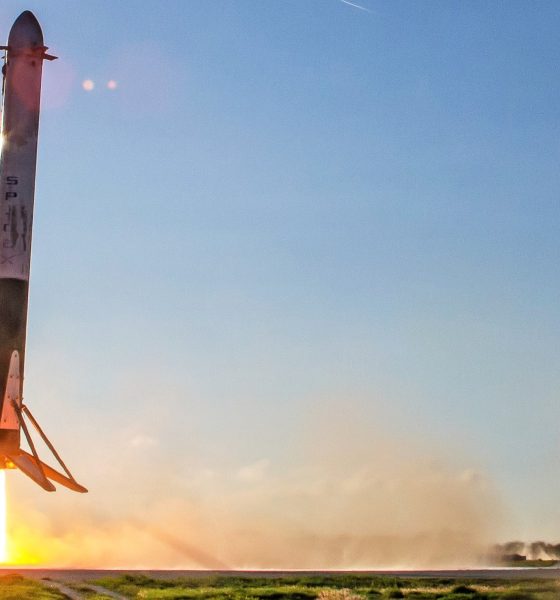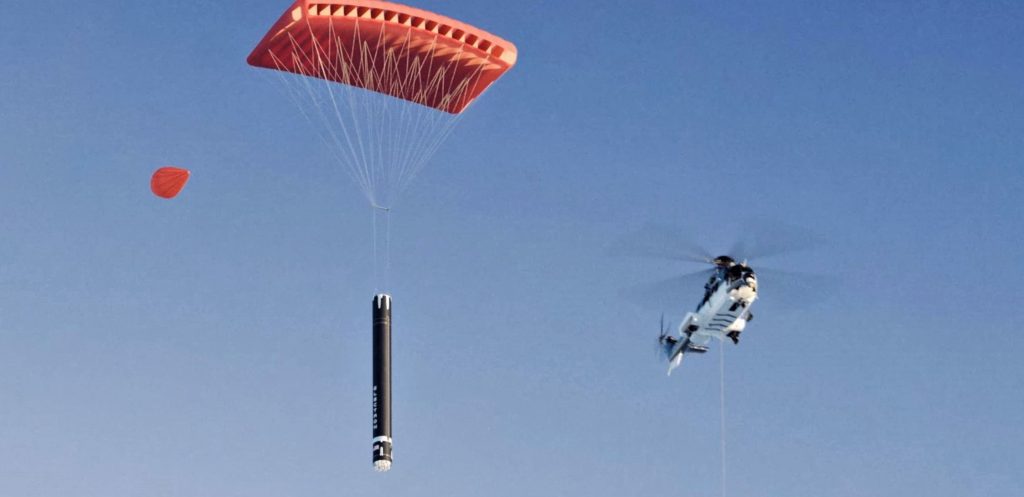

News
SpaceX competitor ULA CEO still questions the economic value of reusable rockets
SpaceX has made a name for itself for being one of the only private space companies today to deploy a fleet of rockets that are capable of being reused for multiple missions. Elon Musk has sworn by the economics of rocket reusability, and this is shown by SpaceX’s launch prices compared to competitors that use expendable rockets. Yet for Tory Bruno, the CEO of ULA, the economic sense behind reusable rockets like the Falcon 9 is still questionable.
Interestingly enough, the ULA is poised to use Blue Origin’s BE-4 engines for the first stage of its expendable Vulcan rocket. Like SpaceX, Blue Origin’s vision of spaceflight involves rockets that can be reused multiple times before they are retired. ULA, for its part, notes that it may decide to recover and reuse the Vulcan’s BE-4 engines down the road, using a system that disengages the units after launch and having them fall back through the atmosphere while being protected by an inflatable hypersonic shield.
A helicopter would then be positioned to catch the engine section midair while it makes its descent. ULA has come up with a noteworthy name for this system: the Sensible Modular Autonomous Return Technology, or SMART approach. In a statement to Aviation Week, ULA CEO Tory Bruno explained the strategy behind the company’s SMART strategy.

“It does not impact, in any significant way, the overall performance of the launch vehicle because you don’t have to save fuel to fly home with. You still get to burn up all your fuel, separate your engine, which is the most expensive piece, and recover it,” Bruno said.
Elaborating further, the ULA CEO mentioned that ultimately, he believes that the economics of reusable rockets is still up for question. Bruno argued that it is still difficult to ensure that using reusable rockets instead of expendable machines actually saves money.
“We have not really changed our assessment over the last couple of years because we have yet to see the other forms of reusability—flyback or propulsive return to Earth—demonstrate economic sustainability on a recurring basis. It’s pretty darn hard to make that actually save money… We’ve seen nothing yet that changes our analysis on that,” the ULA CEO said.
The ULA CEO’s points about the possible lack of savings on reusable rockets put him in stark contrast with other noteworthy leaders in the space industry. Apart from SpaceX CEO Elon Musk, fellow billionaire Jeff Bezos of Blue Origin is also intently focused on using reusable rockets. Even Rocket Lab CEO Peter Beck, whose company designs and launches small rockets, has embraced the idea of reusing previously-flown boosters.

In a statement in August 2019, for example, Beck noted that he actually had to “eat his hat” when it came to reusing his company’s rockets. “For a long time, I said we weren’t going to do reusability. This is one of those occasions where I have to eat my hat,” the Rocket Lab CEO said.
That being said, the fact that the ULA CEO is considering reusing the Vulcan’s BE-4 engines may be considered as a small win for reusable rockets. Perhaps in the near future, Bruno would see exactly why SpaceX has grown so much over the years, and why the company is practically launching its Starlink satellite internet system at a minimal cost.
“We view (rocket reuse) as sort of a journey. We’re going to start with the engines because we’re pretty sure we can save money with that and pass those savings on right away. As we learn more by doing, we’ll continue to assess other valuable parts of the rocket, and we may discover that we can do that there as well.
“There is one funny thing about reusability. As you make your rocket less expensive, and you make parts of your rocket less expensive, it’s harder to close a business case on reuse because the thing you’re recovering isn’t as valuable. There’s a balance there,” Bruno said.

News
Tesla starts showing how FSD will change lives in Europe
Local officials tested the system on narrow country roads and were impressed by FSD’s smooth, human-like driving, with some calling the service a game-changer for everyday life in areas that are far from urban centers.

Tesla has launched Europe’s first public shuttle service using Full Self-Driving (Supervised) in the rural Eifelkreis Bitburg-Prüm region of Germany, demonstrating how the technology can restore independence and mobility for people who struggle with limited transport options.
Local officials tested the system on narrow country roads and were impressed by FSD’s smooth, human-like driving, with some calling the service a game-changer for everyday life in areas that are far from urban centers.
Officials see real impact on rural residents
Arzfeld Mayor Johannes Kuhl and District Administrator Andreas Kruppert personally tested the Tesla shuttle service. This allowed them to see just how well FSD navigated winding lanes and rural roads confidently. Kruppert said, “Autonomous driving sounds like science fiction to many, but we simply see here that it works totally well in rural regions too.” Kuhl, for his part, also noted that FSD “feels like a very experienced driver.”
The pilot complements the area’s “Citizen Bus” program, which provides on-demand rides for elderly residents who can no longer drive themselves. Tesla Europe shared a video of a demonstration of the service, highlighting how FSD gives people their freedom back, even in places where public transport is not as prevalent.
What the Ministry for Economic Affairs and Transport says
Rhineland-Palatinate’s Minister Daniela Schmitt supported the project, praising the collaboration that made this “first of its kind in Europe” possible. As per the ministry, the rural rollout for the service shows FSD’s potential beyond major cities, and it delivers tangible benefits like grocery runs, doctor visits, and social connections for isolated residents.
“Reliable and flexible mobility is especially vital in rural areas. With the launch of a shuttle service using self-driving vehicles (FSD supervised) by Tesla in the Eifelkreis Bitburg-Prüm, an innovative pilot project is now getting underway that complements local community bus services. It is the first project of its kind in Europe.
“The result is a real gain for rural mobility: greater accessibility, more flexibility and tangible benefits for everyday life. A strong signal for innovation, cooperation and future-oriented mobility beyond urban centers,” the ministry wrote in a LinkedIn post.
News
Tesla China quietly posts Robotaxi-related job listing
Tesla China is currently seeking a Low Voltage Electrical Engineer to work on circuit board design for the company’s autonomous vehicles.

Tesla has posted a new job listing in Shanghai explicitly tied to its Robotaxi program, fueling speculation that the company is preparing to launch its dedicated autonomous ride-hailing service in China.
As noted in the listing, Tesla China is currently seeking a Low Voltage Electrical Engineer to work on circuit board design for the company’s autonomous vehicles.
Robotaxi-specific role
The listing, which was shared on social media platform X by industry watcher @tslaming, suggested that Tesla China is looking to fill the role urgently. The job listing itself specifically mentions that the person hired for the role will be working on the Low Voltage Hardware team, which would design the circuit boards that would serve as the nervous system of the Robotaxi.
Key tasks for the role, as indicated in the job listing, include collaboration with PCB layout, firmware, mechanical, program management, and validation teams, among other responsibilities. The role is based in Shanghai.
China Robotaxi launch
China represents a massive potential market for robotaxis, with its dense urban centers and supportive policies in select cities. Tesla has limited permission to roll out FSD in the country, though despite this, its vehicles have been hailed as among the best in the market when it comes to autonomous features. So far, at least, it appears that China supports Tesla’s FSD and Robotaxi rollout.
This was hinted at in November, when Tesla brought the Cybercab to the 8th China International Import Expo (CIIE) in Shanghai, marking the first time that the autonomous two-seater was brought to the Asia-Pacific region. The vehicle, despite not having a release date in China, received a significant amount of interest among the event’s attendees.
Elon Musk
Elon Musk and Tesla AI Director share insights after empty driver seat Robotaxi rides
The executives’ unoccupied tests hint at the rapid progress of Tesla’s unsupervised Robotaxi efforts.

Tesla CEO Elon Musk and AI Director Ashok Elluswamy celebrated Christmas Eve by sharing personal experiences with Robotaxi vehicles that had no safety monitor or occupant in the driver’s seat. Musk described the system’s “perfect driving” around Austin, while Elluswamy posted video from the back seat, calling it “an amazing experience.”
The executives’ unoccupied tests hint at the rapid progress of Tesla’s unsupervised Robotaxi efforts.
Elon and Ashok’s firsthand Robotaxi insights
Prior to Musk and the Tesla AI Director’s posts, sightings of unmanned Teslas navigating public roads were widely shared on social media. One such vehicle was spotted in Austin, Texas, which Elon Musk acknowleged by stating that “Testing is underway with no occupants in the car.”
Based on his Christmas Eve post, Musk seemed to have tested an unmanned Tesla himself. “A Tesla with no safety monitor in the car and me sitting in the passenger seat took me all around Austin on Sunday with perfect driving,” Musk wrote in his post.
Elluswamy responded with a 2-minute video showing himself in the rear of an unmanned Tesla. The video featured the vehicle’s empty front seats, as well as its smooth handling through real-world traffic. He captioned his video with the words, “It’s an amazing experience!”
Towards Unsupervised operations
During an xAI Hackathon earlier this month, Elon Musk mentioned that Tesla owed be removing Safety Monitors from its Robotaxis in Austin in just three weeks. “Unsupervised is pretty much solved at this point. So there will be Tesla Robotaxis operating in Austin with no one in them. Not even anyone in the passenger seat in about three weeks,” he said. Musk echoed similar estimates at the 2025 Annual Shareholder Meeting and the Q3 2025 earnings call.
Considering the insights that were posted Musk and Elluswamy, it does appear that Tesla is working hard towards operating its Robotaxis with no safety monitors. This is quite impressive considering that the service was launched just earlier this year.








